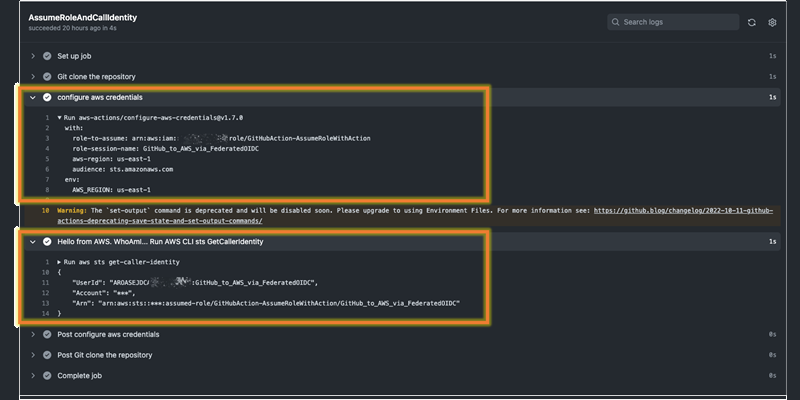AWS Security Blog
Tag: IAM
Validate IAM policies by using IAM Policy Validator for AWS CloudFormation and GitHub Actions
April 15, 2024: AWS has launched two new GitHub Actions that can be used to simplify some of the steps covered in this blog post. Click here to learn more abbot the new GitHub actions for AWS CloudFormation and HashiCorp’s Terraform. In this blog post, I’ll show you how to automate the validation of AWS […]
How to receive alerts when your IAM configuration changes
June 12, 2024: Update: This post has been updated to deploy the solution in the North Virginia (us-east-1) AWS Region. August 21, 2023: This post had been updated to change from wildcard pattern matching to using “prefixes” for EventBridge pattern rules. July 27, 2023: This post was originally published February 5, 2015, and received a […]
IAM Policies and Bucket Policies and ACLs! Oh, My! (Controlling Access to S3 Resources)
September 11, 2023: This post has been updated. Updated on July 6, 2023: This post has been updated to reflect the current guidance around the usage of S3 ACL and to include S3 Access Points and the Block Public Access for accounts and S3 buckets. Updated on April 27, 2023: Amazon S3 now automatically enables […]
Use IAM roles to connect GitHub Actions to actions in AWS
May 22, 2023: We updated the post to reflect case sensitivity in the IDP entered: https://token.actions.githubusercontent.com. The IDP created in this post should be entered in lowercase through the post. Have you ever wanted to initiate change in an Amazon Web Services (AWS) account after you update a GitHub repository, or deploy updates in an […]
How to use Google Workspace as an external identity provider for AWS IAM Identity Center
January 25, 2024: This post is no longer current. Please see this tutorial for the updated info. March 21, 2023: We modified the description of a permission set in the Introduction. March 8, 2023: We updated the post to reflect some name changes (G Suite is now Google Workspace; AWS Single Sign-On is now AWS […]
How to use policies to restrict where EC2 instance credentials can be used from
January 13, 2025: This post was updated to state the limitations of AWS service permissions with VPC endpoints. April 5, 2023: A fix has been added to the Service Control Policy examples to allow EC2 instances to mount encrypted EBS volumes. March 7, 2023: We’ve added language clarifying the requirement around using VPC Endpoints, and […]
How to monitor and query IAM resources at scale – Part 2
In this post, we continue with our recommendations for using AWS Identity and Access Management (IAM) APIs. In part 1 of this two-part series, we described how you could create IAM resources and use them soon after for authorization decisions. We also described options for monitoring and responding to IAM resource changes for entire accounts. […]
How to monitor and query IAM resources at scale – Part 1
March 7, 2023: We’ve fixed a typo in the blog post. In this two-part blog post, we’ll provide recommendations for using AWS Identity and Access Management (IAM) APIs, and we’ll share useful details on how IAM works so that you can use it more effectively. For example, you might be creating new IAM resources such as roles […]
The anatomy of ransomware event targeting data residing in Amazon S3
Ransomware events have significantly increased over the past several years and captured worldwide attention. Traditional ransomware events affect mostly infrastructure resources like servers, databases, and connected file systems. However, there are also non-traditional events that you may not be as familiar with, such as ransomware events that target data stored in Amazon Simple Storage Service […]
How to revoke federated users’ active AWS sessions
February 6, 2023: Updates added to explain an additional detail regarding the sourceIdentity field. In addition to using the sourceIdentity field to reference the user through various roles they have assumed, you may also construct your IAM trust policies to enforce acceptable sourceIdentity values or ensure any value for sourceIdentity is set. When you use […]








